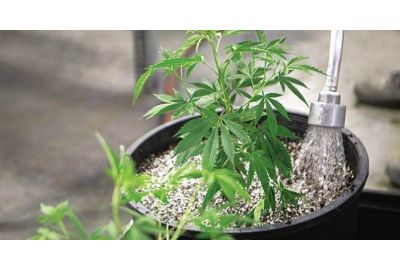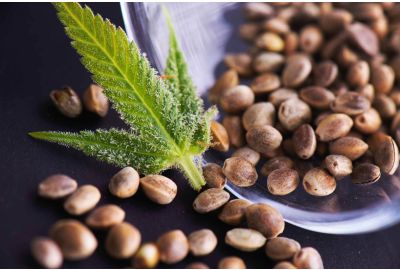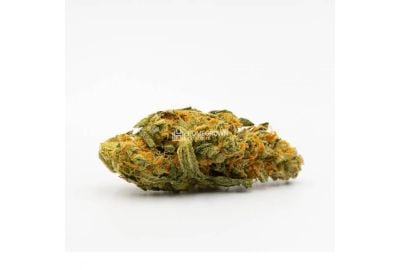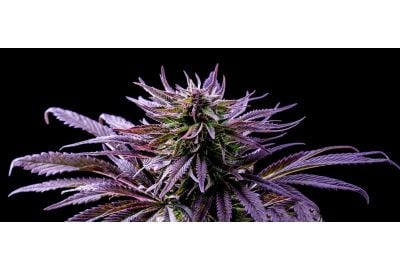Growing Autoflowers: Week by Week Guide
Growing autoflower cannabis plants is easy for beginner and experimental growers. This fruitful journey gives you flavorful buds that get you stoned like their photoperiod variants.
You’ll never want to look back once you venture into autoflower growing. Modern auto strains are better than the first generations, growing fast without a fuss.
We take you week by week in this autoflower growing guide and show you common mistakes you should avoid. Roll on to confidently buy these strains and harvest in no time.
Why you should start growing autoflower plants
Growing autoflower seeds reduces many cultivators’ grievances. Their biggest benefit is that these strains make it easy for people to harvest marijuana year-round outdoors.
In the last few decades, breeding programs have led to autoflower strains that are less temperamental. They also provide significantly higher yields than before.
You’ll continuously keep buying auto seeds once you discover how to grow an autoflowering weed plant. These strains are great if you want to get more harvests per year.
Don’t worry too much about light schedules when growing an autoflower plant. These strains have ruderalis genetics. This cannabis variant hails from the Northern Hemisphere, where there's usually close to 24 hours of light daily when they’re in season.
Autoflower plants bloom by themselves at a certain age. There’s no need to introduce at least 12 hours of darkness per day to induce flowering while growing autoflower plants.
Many autoflower plants thrive on balconies with ideal atmospheric conditions. These strains don't require a lot of room because they grow fast and remain small.
Autoflower strains produce marijuana that’s just as potent and delicious compared to their photoperiod variants. Modern autoflower yields are also comparable, considering the time taken to grow them.
Autoflower growing guide: What do you need to grow at home
Provide autoflower seeds and plants all the attention they deserve to live up to their potential. You’ll learn the basics in this how-to grow autoflowering weed for beginner’s guide. Before we start, let’s look at what you need to get the most abundant yields:
- The cultivars' strain, size, stage, and light intensity influence what's required to change in the plant's food. Some strains want more calcium or phosphorus than others.
- Like any marijuana cultivar, use slightly acidic water to saturate the growing medium.
- Most problems with nurturing cannabis come from the wrong pH. Use a pH soil tester if growing autoflower seeds in soil. Be careful never to oversaturate the medium and drown the roots.
- Use Cal-mag as a bottle nutrient when growing autoflower plants to supplement and give them more calcium. Organic growers can substitute phosphorus nutrients with tea, backbone, or blood meal.
- Readily available cannabis-friendly bloom nutrients contain high levels of phosphorus to aid in flower production after the vegging stage. You can get these elements in liquid forms, and they are readily available.
- Use amendments such as worm castings, gypsum, dolomite, and lime as an alternative source of calcium when growing autoflower plants in soil. However, these usually raise the pH of a low acidic medium so bring it back to the neutral zone for calcium uptake.
- Most cultivators use 3–5-gallon buckets for autos because that's enough for these modest strains. Many gardeners report stressed plants from root-bound in soil when growing autoflower plants in smaller pots. A 5-gallon pot is great, though it's heavier, and you need to water more often than a 3-gallon pot. A 7-gallon pot is far too big because it doesn't allow proper root development for fast finishing autos.
- Besides pH problems, deficiencies can occur due to wet, compact soil. Give your plants the correct mix at the right time if growing autoflower marijuana using synthetic chemicals.
- You can set up to 24 hours of illumination from start to finish for accelerated development if growing an autoflower indoors. However, it's advisable to use an 18/6 or 20/4 light cycle to avoid stressing your autoflower plant. Roots flourish more at night.
How to grow autoflowering weed: Week by week guide
The duration for each auto’s growth cycle is strain-dependent, but here's a standard walkthrough of how to grow an autoflowering weed plant.
Week 1: Germination
The life cycle begins with sprouting seeds when growing autoflower cannabis cultivars. There are many ways to achieve that since all they need is heat, air, and water.
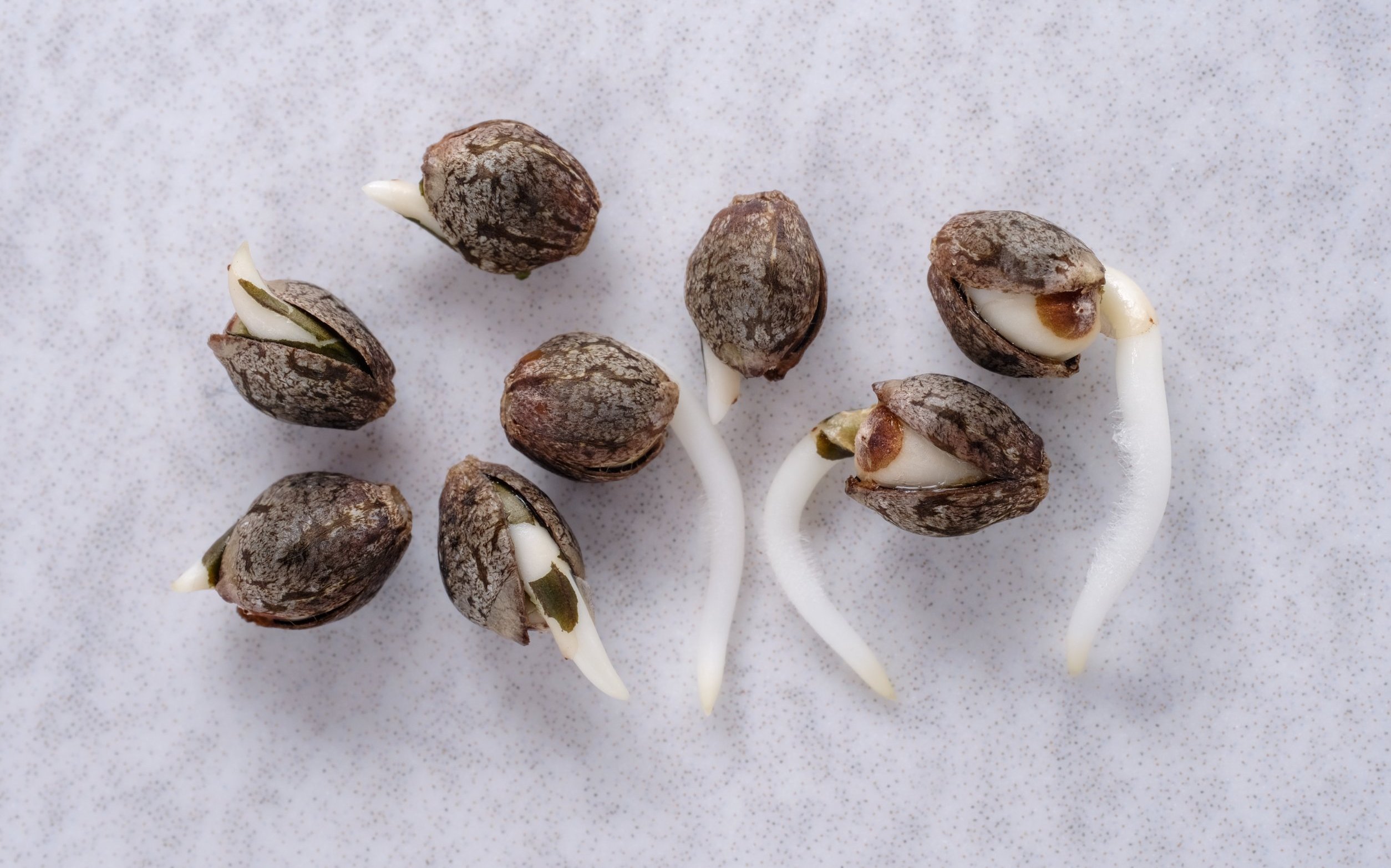
When growing autoflowers, some gardeners plant directly in soil, taking up to 2 weeks. We at Homegrown Cannabis Co. recommend using the highly successful paper towel technique that sprouts seeds in 1–5 days.
Increase the germination rates by ensuring a high humidity environment during the process. To avoid transplant shocks, it’s advisable to only plant in the final pot when growing autoflowers.
Week 2: Seedling
Your auto doesn't need many nutrients as a seedling in the first week. Use half of the dose of nutrients indicated on the package when you get into the late seedling phase.
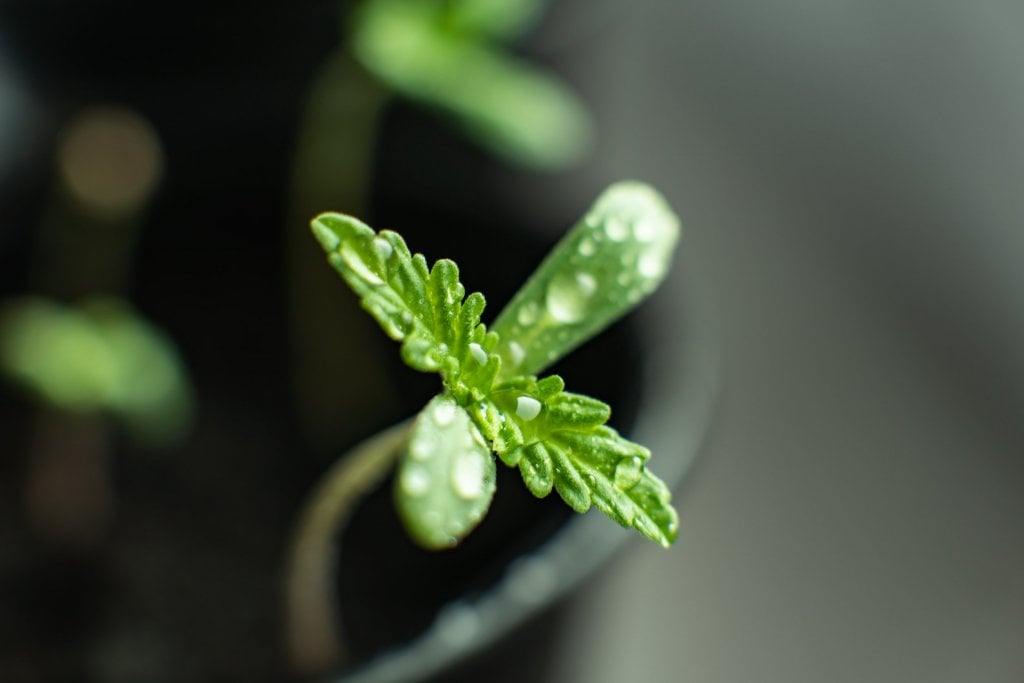
Ensure the medium’s moist but not too wet. Cover the seedling with a plastic bowl when growing autoflower seedlings to maintain high humidity.
If growing an autoflower indoors, reduce the distance between the light source and the seedling if it grows too tall and lanky.
When growing autoflower marijuana plants, the seedling phase ends when the plant continuously develops fully fingered fan leaves.
Week 3–4: Veg
The first step to low-stress training and defoliating should be when the plant is about 4–6 inches tall while in the veg cycle. Low-stress training helps you control the cultivar's height, shape, and size to create a wider canopy, increasing yields.
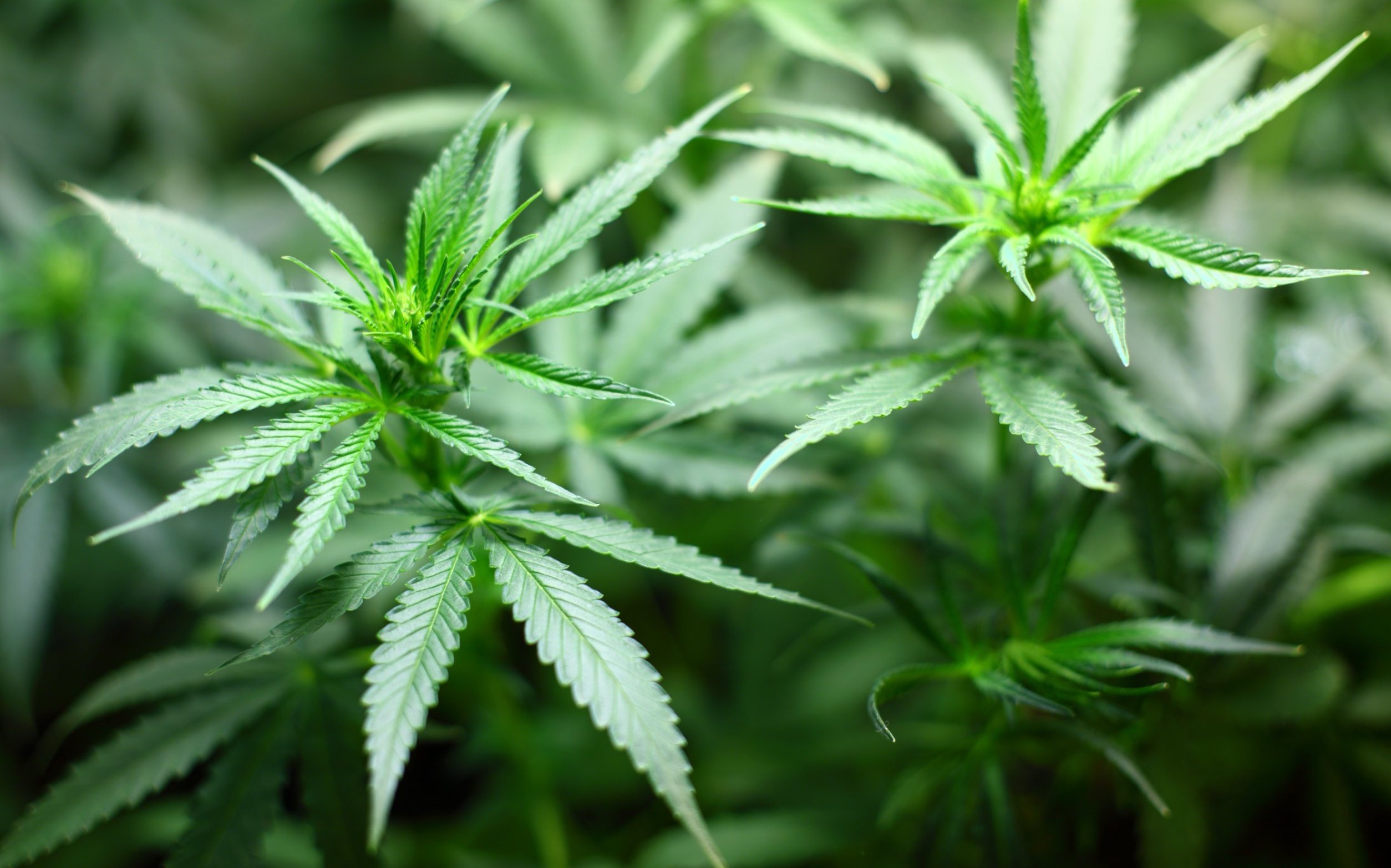
Secure tall branches to the edges of your pot using ties or tape when growing autoflower cultivars. Carefully create a series of bends on the plant over the following weeks by pulling branches towards the pot's side. This action exposes the lower canopy to create multiple main colas.
High-stress training could disrupt development when growing an autoflower plant. Flowering starts very early, and there's little time to recover while in veg.
Don’t slow down any phase when you have a small amount of time to work with. Delays in any progress are detrimental to your overall result when growing from autoflower seeds.
Lower relative humidity to 50% and temperature to around 68℉ when in the veg cycle. Most growers water with around half a liter every day and feed twice, but this is dependent on the strain and growing conditions.
You might see pistils emerge in the final weeks of vegging, but don't make the mistake of switching to blooming nutrients yet. Allow for nitrogen uptake while in the pre-flower stage to sustain the plant's vigorous growth.
Week 5–6: Flowering
Flowering starts genetically regardless of the light schedule when growing an autoflower indoors or out. The time taken during this phase is strain-dependent. We have details on the time each of our strains takes to ripen on their product pages.
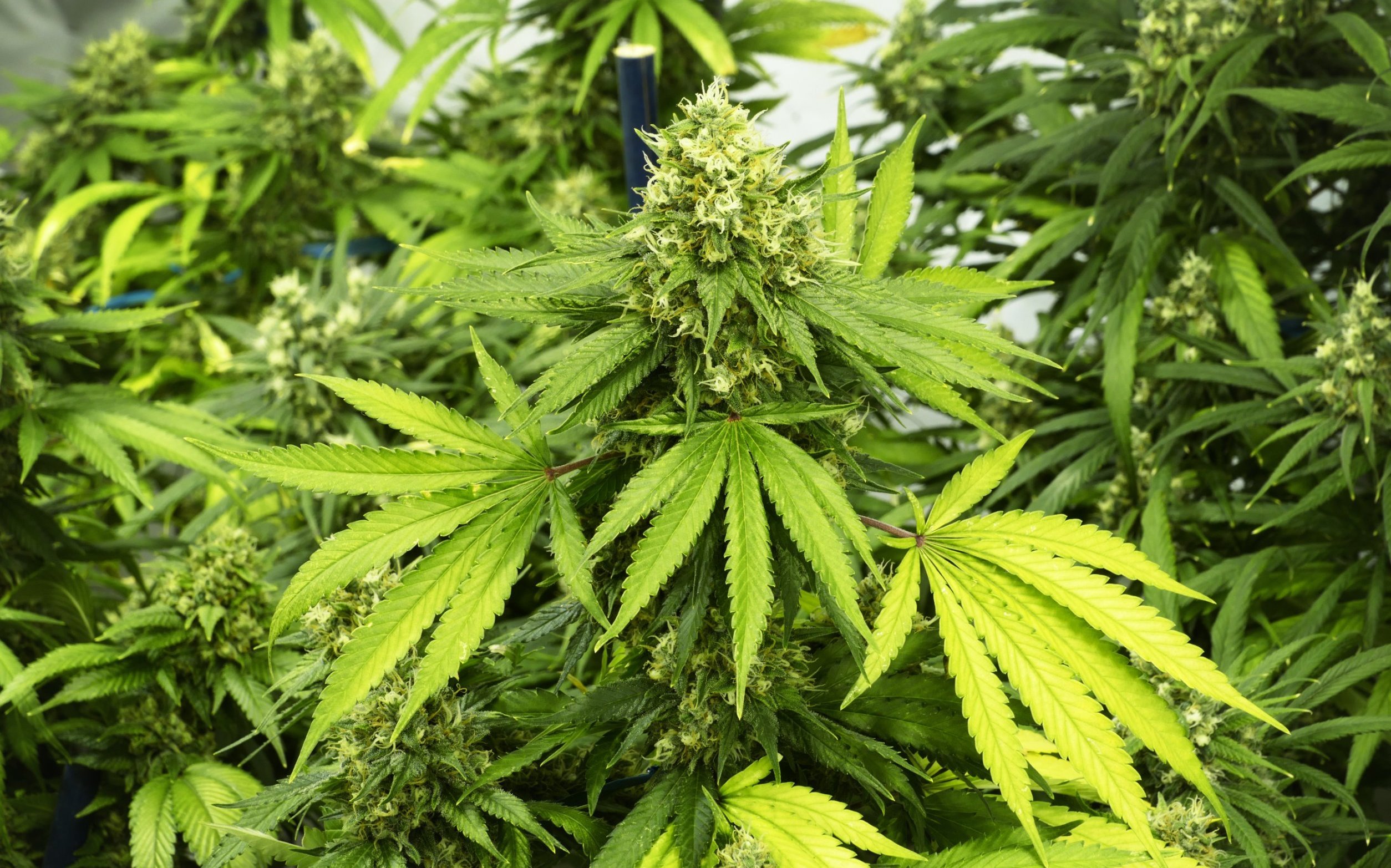
The pre-flowering phase is in motion when white pistils develop inside the branches. Plants also start to stretch significantly. They need about a liter of water at this stage every 2–3 days and more blooming supplements.
Week 7: Monitor
Drop humidity to around 40% to reduce molding chances while growing autoflowers indoors. Lower temperature to around 68℉. It shouldn’t be too hot or wet at this stage if growing outdoors.
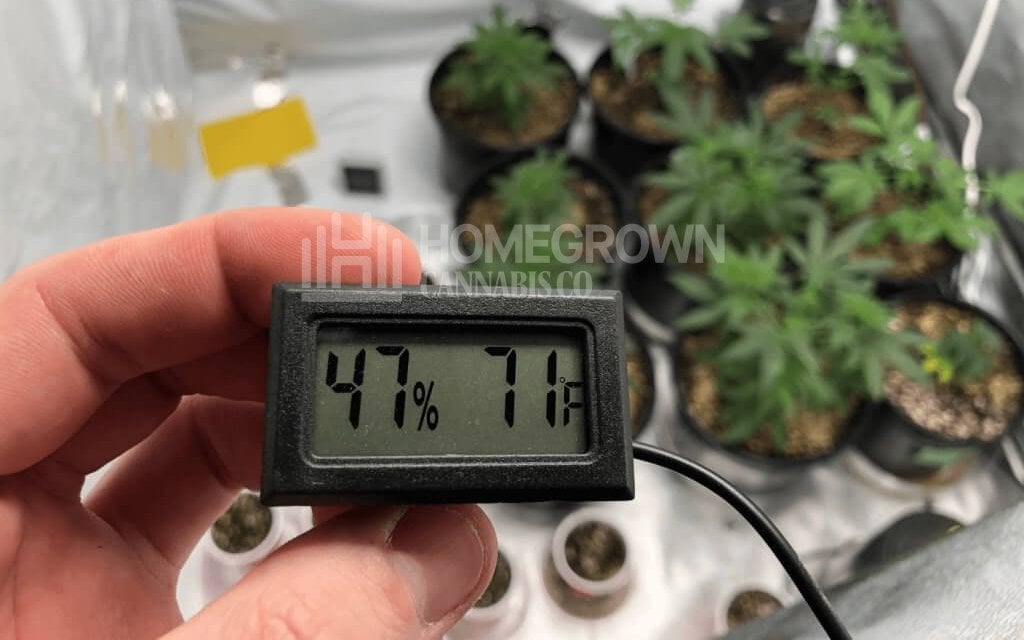
It's still okay to use low-stress training techniques up to this phase. Regularly tuck behind leaves that block light to blooming sites for continued optimal development when growing autoflower plants.
Week 8: Flushing and defoliation
Flushing when growing autoflowers isn’t a must. There’s no scientific data to support that it helps. Expert growers are the only ones who should try a hand at flushing if growing autoflower plants.
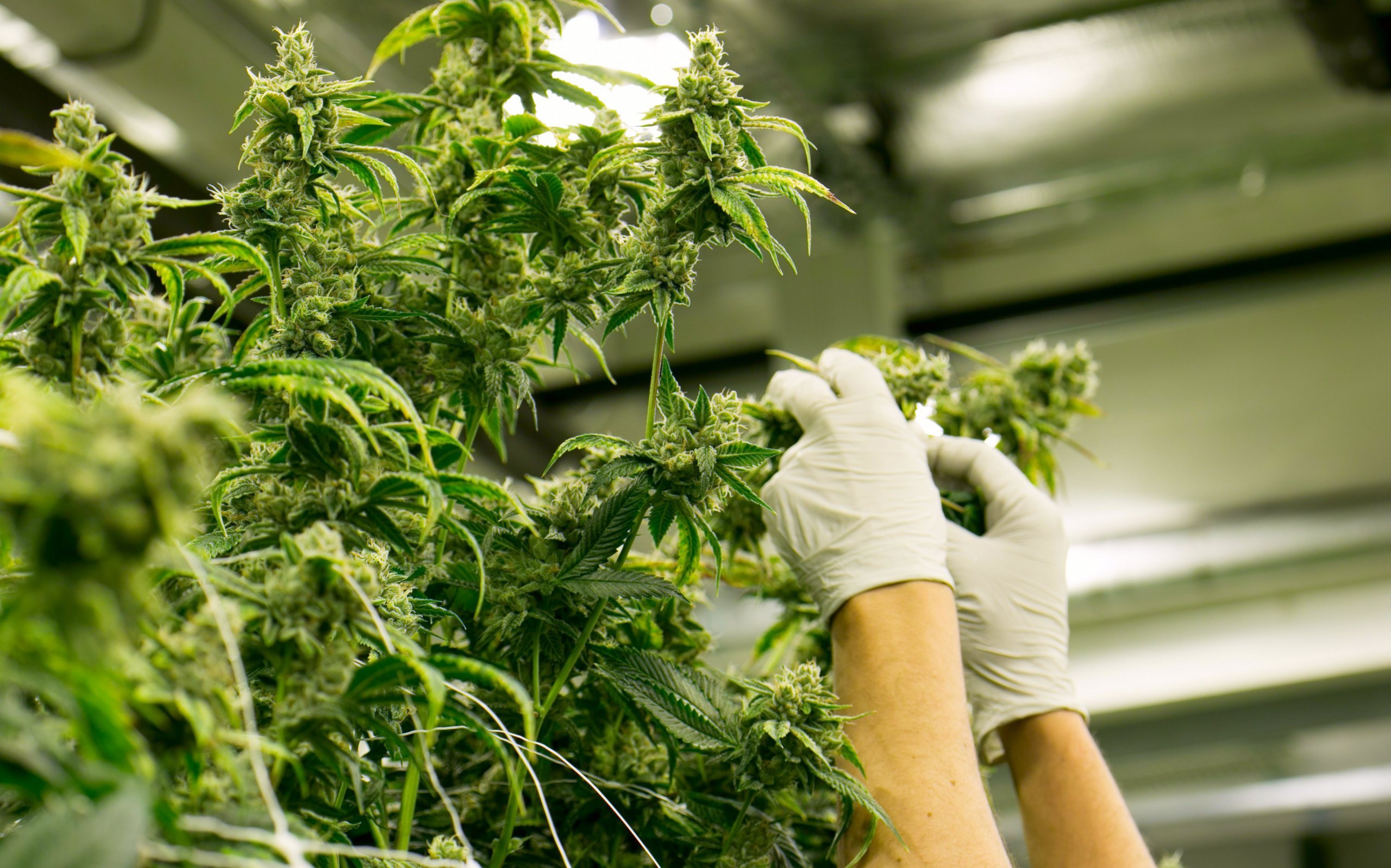
Cannabis defoliation is strain-dependent—some are okay to do this, but not halfway into flowering. Support the branches that carry heavy colas as you near harvest.
Week 10–12: Harvesting
All cannabis buds are ready to reap when most trichomes are milky white—THC is at its highest then.

Resin is clear, then cloudy close to harvest, and finally amber—this indicates diminishing THC levels. Most of the trichomes also turn brownish-red around harvest after growing autoflowers.
Note the time it takes according to autoflowering seeds in our catalog to harvest at the right time. Follow the standard practices of curing and storing after harvesting.
How long does it take to grow autoflowering weed?
The length of time taken when growing autoflowers from start to finish is strain-dependent. Some use as little as eight weeks from seed to harvest in perfect conditions.
The life cycle of autoflower cannabis plants starts with germination, taking around 1–5 days. Two dicotyledons emerge from the top of the preferred medium, starting the short seedling phase when growing autoflower seeds.
The dicotyledons are all the plant needs for nutrition in the first week before developing a set of true leaves. The vegetative cycle takes another 2–3 weeks. The autoflower cannabis plants then decide to bloom without intervention.
Flowering time is strain-dependent, but it usually takes around two months when growing most autoflower plants.

6 mistakes to avoid when growing autoflower marijuana
It's good to learn from your mistakes but better to learn from other people's. Here's what you should avoid when looking at how to grow an autoflowering weed plant.
Mistake 1: Stressing autos
Beginners should only apply low-stress training techniques to autos—they don't get the recovery time necessary to bounce back properly while in veg.
Plant in the final pot when growing from autoflower seeds because these cultivars develop fast. Transplanting can damage the cultivar's roots and inhibit growth. Stunted growth costs you some much-needed vegetative development.
Mistake 2: Planting at the wrong time outdoors
Timing is key when growing autoflowers outdoors—avoid frost by nurturing autos when it’s warm and sunny.
Growing autoflower plants in unideal conditions affects yields significantly. Autos don't need specific darkness periods to flower, but they love a lot of sun exposure to produce optimum yields.
Mistake 3: Overwatering
When growing an autoflower with a short recovery window, avoid overwatering. Marijuana cultivars take oxygen through their roots, and too much water suffocates them.
Lift the container to see whether your soil's saturated. Only water the pot if it's light, the topsoil starts to feel dry, or leaves seem droopy due to dryness. Record when the water’s required to create a schedule. Most people water their autoflowers in soil 2–3 times a week.
Use fabric or air pots when growing autoflower seeds in the soil. Ensure there are enough holes at the bottom of plastic pots to allow excess water runoff. Don’t drown the base of the plant. Encourage root growth by watering the outer edges and letting it soak in.

Mistake 4: Over or underfeeding
Like water, less is more when feeding cannabis cultivars. Fixing underfeeding is also easier than overfeeding when growing autoflower plants. Look out for signs of nutrient deficiency and lockout in the plant's leaves.
While shopping for fertilizers, check the NPK, which stands for nitrogen, phosphorus, and potassium. These macronutrients usually come in varying ratios since vegging and flowering plants need them differently.
Look at the autoflower growing guide for each strain you buy. We provide detailed info on when to switch to suitable nutrients.
While in veg, cannabis cultivars require nitrogen the most to develop their branches. Flowering plants need phosphorus and potassium more.
Mistake 5: The wrong pH
Having the wrong pH is a common problem for photoperiod and autoflower growing. Cannabis plants love a slightly acidic medium, so aim for pH between 6.0–7.0 for soil and 5.5 to 6.5 in hydro.
Incorrect pH leads to the lockout of elements even if there's enough of what's needed. Roots cannot absorb magnesium, calcium, or phosphorus if your water has a pH lower than six.
Mistake 6: Harvesting time
When growing autoflower plants, you know harvest is approaching when pistils start to darken. Check on the trichomes with a magnifying glass or lighted loupe.
At the start of flowering, the resin is clear, then cloudy, close to ripening, and finally amber. The best harvest time is when most of the trichomes are cloudy. The longer you wait, the more physical the effect. Buds harvested early render a trippy psychoactive buzz.
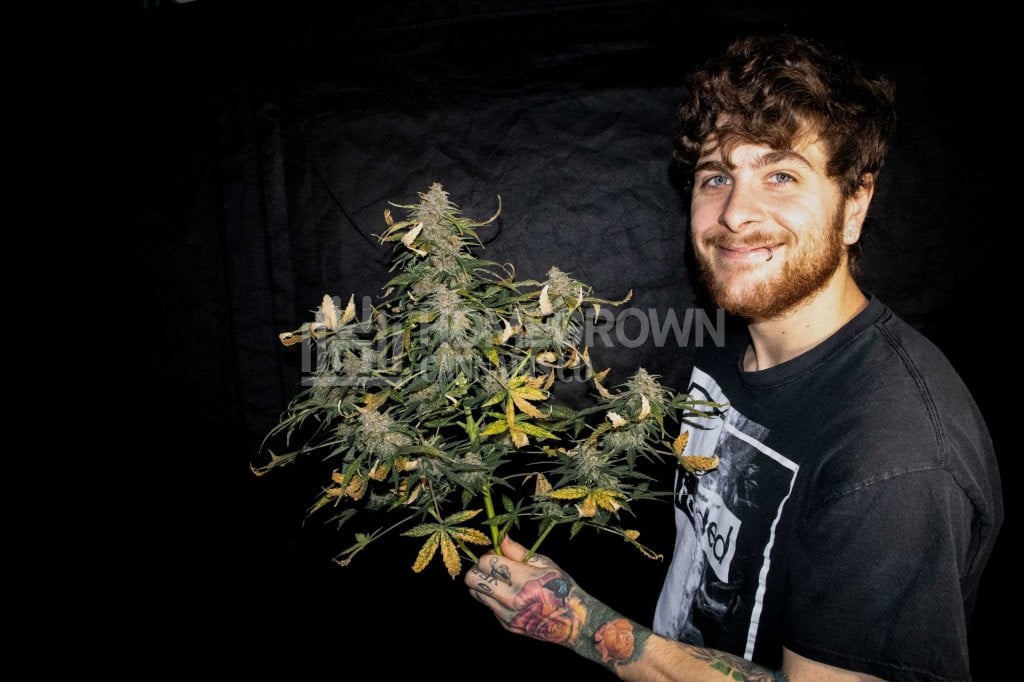
5 extra tips for growing autoflower plants
Here are more tips for growing autoflower plants.
Tip 1: Growing medium
The environment in which you're growing an autoflower is important because it impacts yields. These plants thrive in a well-aerated medium that can store sufficient water. Use fabric or plastic pots with good drainage if cultivating in soil.
Mix coco coir, perlite, and peat moss to craft better consistency in your medium#. You can also make or buy super soil specifically created to nurture cannabis plants.
Tip 2: Deficiencies
Some deficiencies can be difficult to fix, never going away. When growing an autoflower, look at the plant's newer growth and development to look for signs of improvement.
Tip 3: Light schedule
Some indoor cannabis cultivators claim that having lights on 24/7 from seed to harvest gives them the best results with autos. However, we advise using an 18/6 light schedule to allow the plant to rest and roots to flourish during the dark periods.
Experiment with light schedules if growing an autoflower indoors to see what works. Remember, ruderalis grows naturally in the Northern Hemisphere, where this small strain receives nearly 24 hours of light per day.
Tip 4: Flushing autoflowers
Many growers believe denying cannabis plants nutrients in the last 1–2 weeks before harvest increases resin production. It's also thought to reduce the chemical-like taste in cannabis if you use synthetic nutrients.
Flushing is risky if done too early and unnecessary, according to many people growing autoflower and photoperiod strains. Besides, there's no scientific evidence to show its benefits.
Beginner cultivators should avoid flushing because the risks outweigh any potential benefits. Autos from the same mother plant are likely to show different signs, finishing at different times.
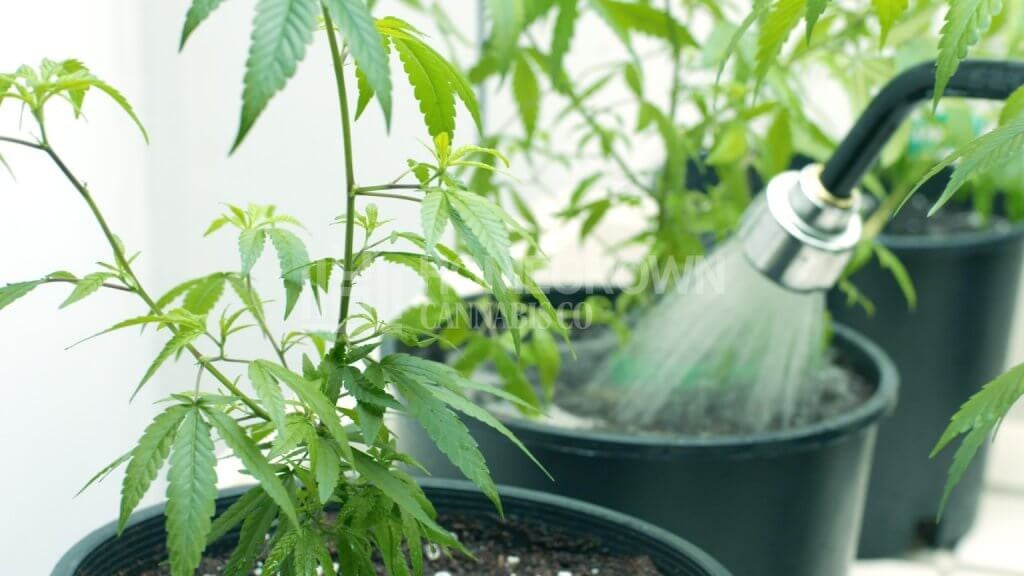
Tip 5: Choosing the right autos/genetics
Choose a reputable seed bank when you want to buy seeds for autoflower growing. Good genetics are hard to find for autos, but we have many stable varieties and provide tons of information for each strain.
Frequently asked questions about growing autoflowers
Autoflowers are the game-changer taking over from feminized and regular seed variants. Below are answers to some common questions about how to grow autoflowering weed seeds.
Are autoflowers worth growing?
Yes. A huge advantage of growing autoflower vs. photoperiod cultivars is the ability to plant out of season. There’s no need to change the light duration for flowering to start.
When growing autoflower plants, they usually become female cultivars, unlike regular seeds that turn out males 50% of the time. An unpollinated female cultivar (sensimillia) offers high THC because the plant’s focused on producing resin to capture pollen.
Is growing autoflower easy?
Yes, most autos are easy to raise. Autoflower growing essentially means being able to plant all year round when the conditions are ideal.
Irregular light hours can cause a hormonal imbalance that confuses female photoperiod cultivars' internal clock. You don't need to worry about light leaks in your tent or when growing autoflower plants outdoors.
Watch out for mistakes when growing autoflower plants—once you spot an issue, it's likely too late to correct it completely. Photoperiods let you control the veg time so you can experiment and figure out what works before putting the cultivar in flowering.
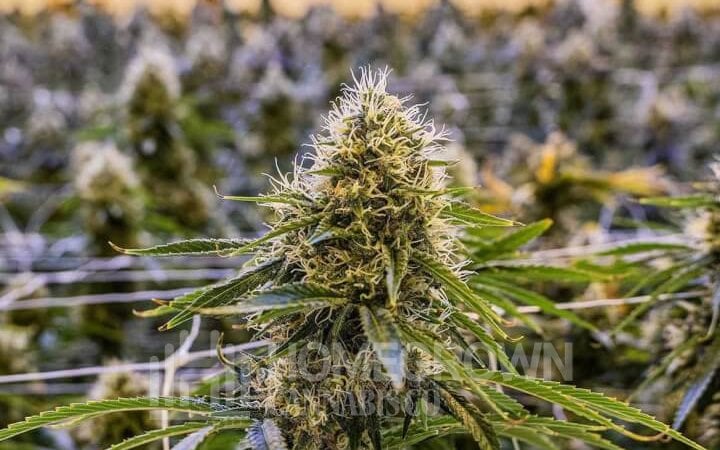
Why are my autoflower buds not growing?
When growing autoflower plants, buds can stop flourishing because they lack sufficient flowering nutrients, namely phosphorus, and potassium. Consider which phase of the growth cycle the plant’s at and what’s needed.
When growing autoflower marijuana for the first time, it's understandable to worry if you’ll get enough yields. Most cultivators get a couple of ounces on the first grow and get better with experience.
Why did my autoflower stop growing?
There are several reasons why you might see hiccups when growing autoflower plants. Here’s what could happen:
- The wrong pH when watering plants is the most common issue.
- Root rot due to overwatering, bacteria, or mold, stopping the plant from absorbing oxygen and nutrients.
- Insects, pests, and diseases can also ravage your plants, compromising their immune system and leading to poor yields if they survive.
- Problems with the medium can arise when growing an autoflower plant. An excess of one element often leads to the lockout of others.
- Stunted growth can also arise from old or low-quality seeds. Lackluster plants develop slowly—if they even sprout.
Automatic chemistry
It's time to get your hands dirty now you know the basics of autoflower growing and what to avoid. Try raising these plants yourself after learning their life cycle, the best pot size, and the autoflower nutrients necessary to yield the most from their cultivars.
We have many strains available in our huge collection of great genetics. Swap ideas and get tips from our awesome community to harvest lots of frosty nuggets when growing autoflower plants.
About the author: Derek LaRose
Also known as Kronic from The Cannabis Kronicles, Derek LaRose is a young ambitious cultivator and a staple educator for indoor cultivation.
